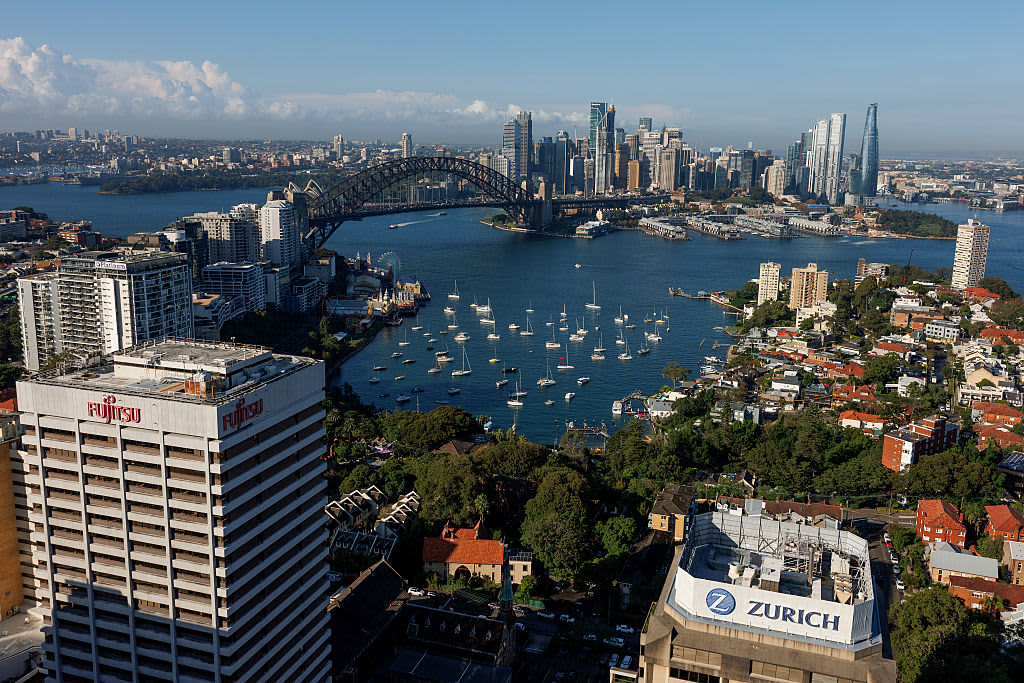
Australia’s economy grew less than expected in the first quarter this year, the Australian Bureau of Statistics said in a statement Wednesday, as growth stalled amid the simmering global trade tensions.
The economy grew 1.3% year-on-year in the first quarter, lower than the estimated 1.5% growth in a Reuters poll. That was unchanged from the 1.3% year-on-year growth in the prior quarter.
On a quarter-on-quarter basis, the economy expanded 0.2%, undershooting expectations for a 0.4% growth.
Katherine Keenan, ABS head of national accounts, attributed the soft growth to shrinking public spending and weakened consumer demand and exports.
“Public spending recorded the largest detraction from growth since the September quarter 2017. Extreme weather events reduced domestic final demand and exports. Weather impacts were particularly evident in mining, tourism and shipping,” said Keenan.
The official breakdown data showed the biggest drags on activity came from public demand and net trade, each subtracting 0.1 percentage point from the quarterly GDP figure, while private demand boosted output by 0.3 percentage point.
The Reserve Bank of Australia slashed rates to 3.85%, its lowest level in two years, at its last meeting in May as inflation concerns receded, offering some scope to bolster growth and counter rising global trade risks.
The first-quarter GDP release could bolster the case for the RBA to loosen monetary policy further, Abhijit Surya, senior APAC economist at Capital Economics, said in a note, as the elevated economic uncertainty may prompt households to prioritize saving over spending.
Nevertheless, Surya cautioned that upside risks to inflation persist, as labor costs continued to grow at a faster rate than the RBA’s inflation target, maintaining the view that the central bank will only cut rates to 3.35% in the current easing cycle.
Australian consumer inflation eased to a four-year low of 2.4% in the first quarter of 2025, within the RBA’s target range of 2% to 3%. In April alone, the monthly inflation also held steady at 2.4% compared with a year earlier.
The central bank said last month that it expects domestic GDP growth to pick up in 2025, driven by a recovery in consumption and continued strength in public demand, while “somewhat weaker” demand for its exports could weigh on growth.
Minutes of its May 20 meeting showed the central bank board considered cutting rates by an outsized 50 basis points, citing “much higher than expected” tariffs by the Trump administration and “highly unpredictable” tariff decisions moving forward.
Some board members debated that a large reduction could provide “greater insurance” against rising global trade risks. The central bank eventually proceeded with the more predictable route of a 25 basis-point cut last month, leaving the door open for more rate cuts.
Ben Udy, lead economist at Oxford Economics, is of the view that further signs of economic weakness extending into the second quarter could prompt the central bank to cut rates again in July, sooner than its current forecast.
“Drag from uncertainty on GDP only set to get worse,” Udy said in a note Wednesday.
The benchmark S&P/ASX 200 index rose 0.83% following the GDP release, while the Australian dollar remained steady, last trading at 0.6460 against the dollar.
Source: CNBC
